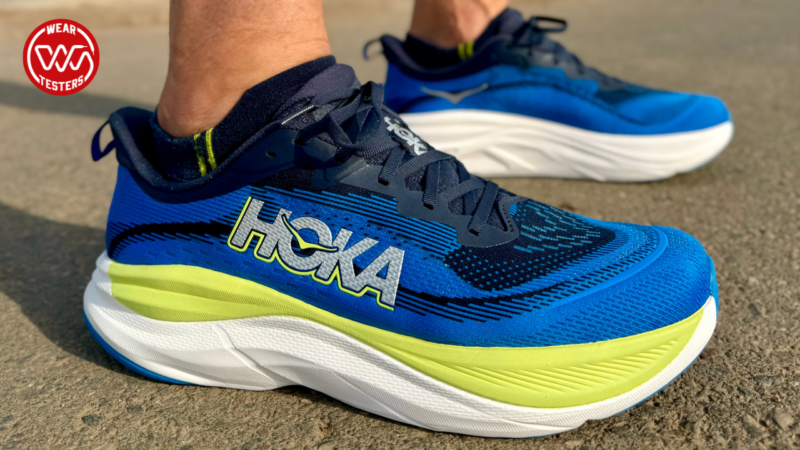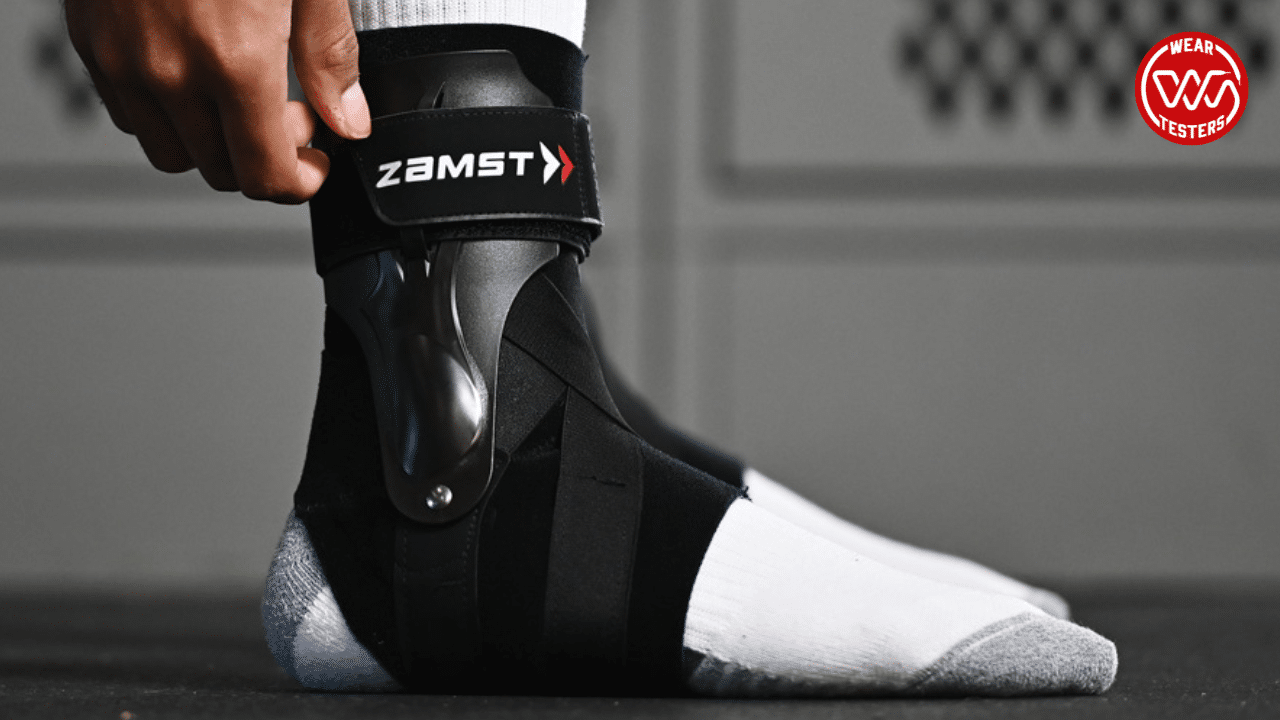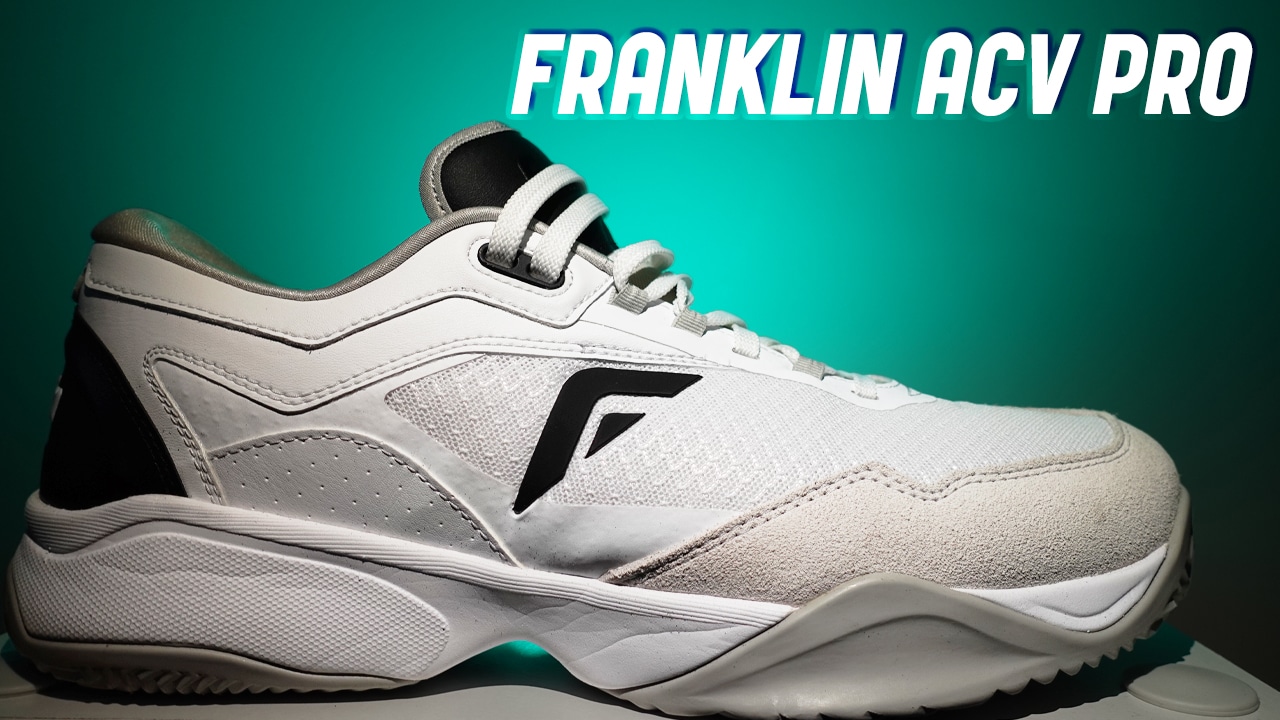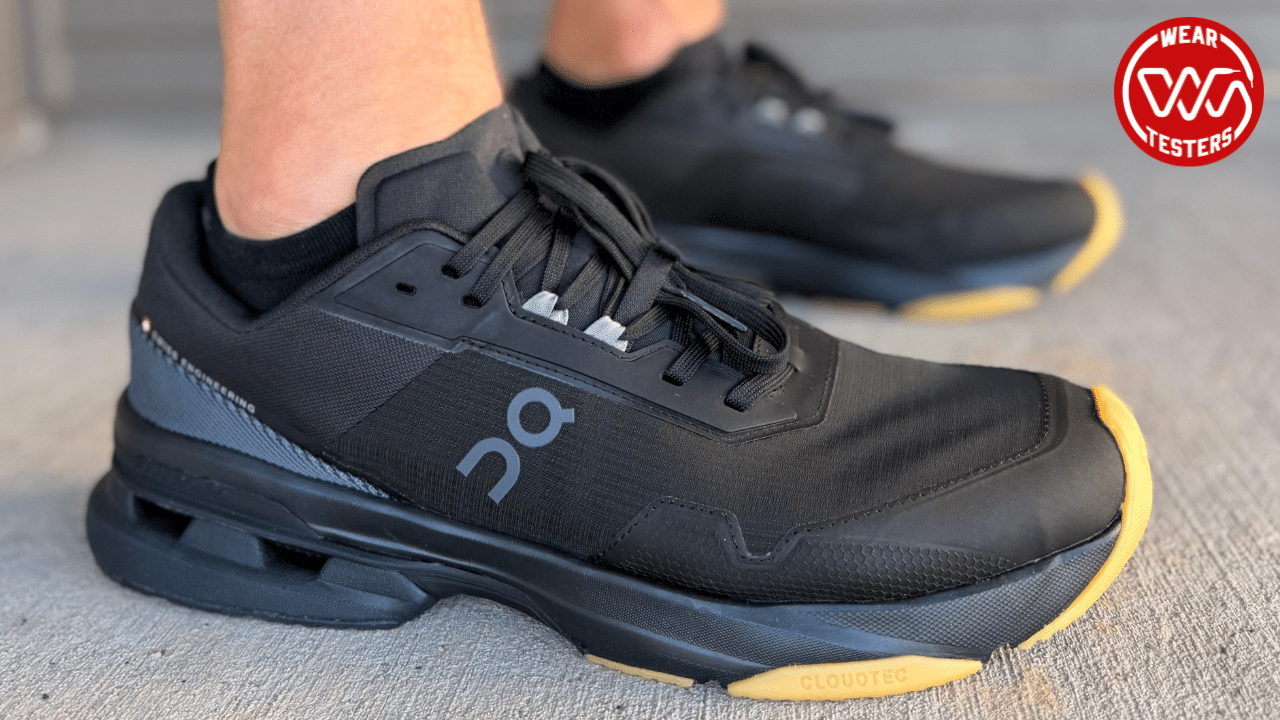It’s official, the Hoka Bondi is now primarily a shoe for walking and standing all day. The Hoka Skyflow has taken the Bondi’s place as the most cushioned everyday running shoe in Hoka’s lineup. The Skyflow sports a smoother, less clunky midsole than the Bondi and arrives to compete with shoes like the Asics Gel Nimbus 26, New Balance More v5, and the Brooks Glycerin 21.
But can it compete with those dependable daily trainers in its first year of existence? Let’s find out.
Hoka Skyflow
Release Date: July 15, 2024
Price: $160
Weight: Men’s 10.0 oz., Women’s 8.6 oz.
Drop: 5mm
Sizing: True to size
- Rundown: The Hoka Skyflow is a durable cruiser that will appeal to those who prefer a stiffer platform beneath a tall stack of soft-ish foam.
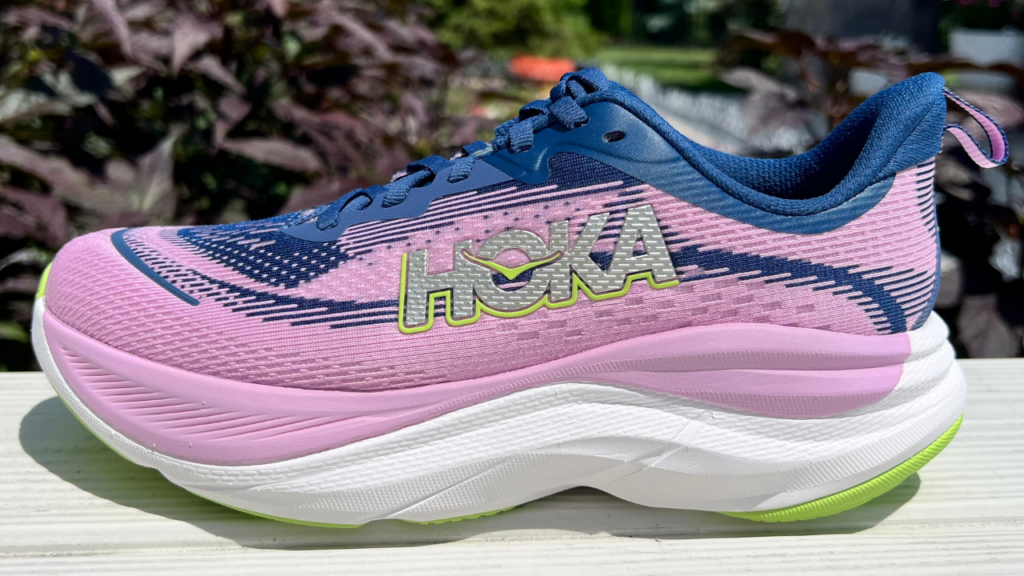
What is the Hoka Skyflow?
The Hoka Skyflow is designed to be similar in geometry to the smooth-riding Hoka Skyward X. The Skyward X is Hoka’s super trainer and the softest shoe in Hoka’s long history of soft, marshmallowy shoes.
While the Hoka Skyflow shouldn’t be classified as a bouncy marshmallow, it uses supercritical EVA that’s fairly soft with a bit of spring. Above the foam, Hoka uses an Active Foot Frame that the wearer’s foot sits inside. This improves stability and keeps the wearer on the footbed.
The midsole construction is paired with a rocker that’s reminiscent of, but maybe a touch more aggressive than, the Hoka Clifton 9. Below that rocker is an outsole with rubber in all the typical high-wear zones.
Topping the shoes is a creel jacquard upper that fits like a Clifton, a svelte but comfortable collar, and a fully gusseted tongue. The whole upper setup is a common one in running shoes, but it ticks all the boxes of a comfortable upper that will provide comfort and dependability over hundreds of miles.
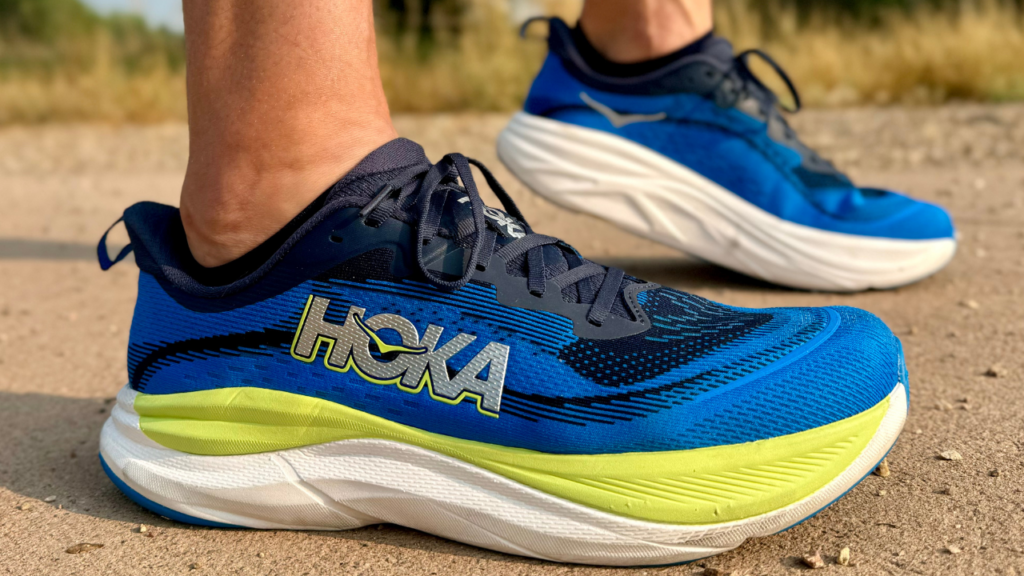
How did the Hoka Skyflow perform for Drew?
Drew: I keep wanting to call the Hoka Skyflow the Skyfall, after the 2012 Bond movie. The names are just too close. Maybe it also has to do with the Skyflow superseding the Bond(i) as Hoka’s high cushion option for running specialty stores. The Bond connection is too strong for my subconscious to let go of. [Editor’s Note: Similarly, my subconscious won’t let go of Daniel Craig]
But yes, you read that right, I think the Hoka Skyflow will attempt to take the place of the Hoka Bondi at most local running stores while the Bondi becomes the domain of places like Dick’s Sporting Goods, Foot Locker, and Scheels. Why, you ask?
The Hoka Skyflow is built to fit within the range right between the Clifton and Skyward X. It has a similar fit and provides that dependable daily running shoe that can soak up a lot of miles. You get more cushion and slightly more bounce than the Clifton but don’t get the plate and squishy softness of the Skyward X. It’s a shoe that will appeal to many runners and goes after the competition we mentioned in the introduction.
The Hoka Skyflow was a near perfect execution of what Hoka was aiming for. A shoe that’s less bulky/clunky than the Bondi, bouncier than the Bondi, and lighter/more streamlined than the Bondi. It’s basically a Bondi for runners so that the Bondi can continue to dominate its current market of nurses and others that are on their feet all day.
The Skyflow isn’t as bouncy as I wanted it to be, but I found the mix of softness/firmness right in the sweet spot for easy and recovery miles. It can even go longer…think 10-12ish miles if you’re keeping the run on the easier side in terms of pace. The rocker shape also helps those days feel a little easier, especially when you’re recovering from intervals or a pacey workout the day before.
It’s a shoe that feels great on non-workout days and one that will last. Both the midsole foam and outsole rubber seemed primed to last and didn’t show much wear at all over the test period.
And finally, while the upper is pretty standard for a $160 running shoe, Hoka didn’t miss any details (like the fully gusseted tongue), and that pays dividends in terms of comfort.
But was it as good an experience for Annie?
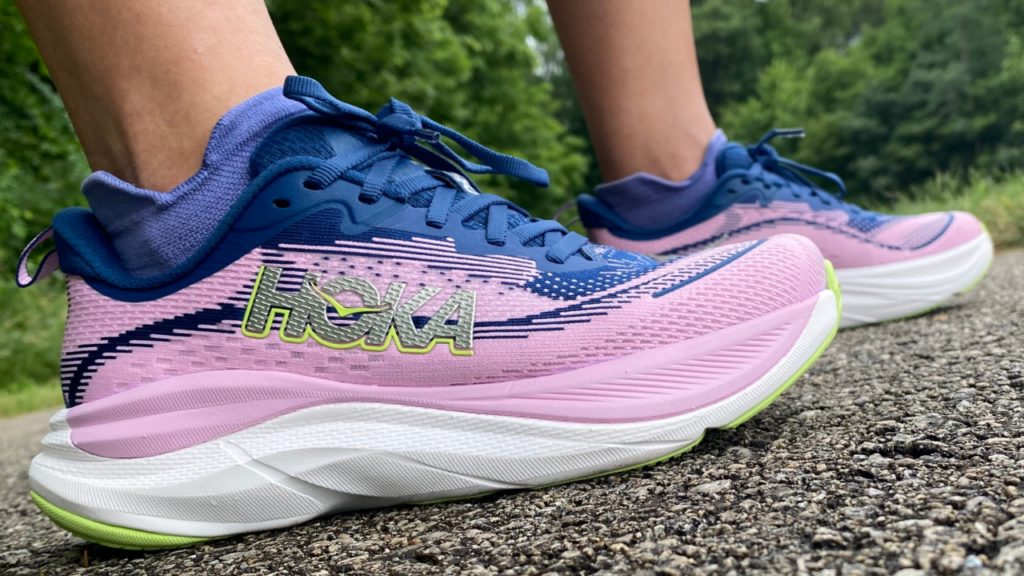
How did the Hoka Skyflow perform for Annie?
Annie: ‘Twas not, Drew. The Hoka Skyflow is one of those shoes where its strengths just don’t quite align with my personal needs or preferences. I totally agree with Drew in that the Skyflow is a far more runnable shoe than the Hoka Bondi, and I also think it’s more durable than a Clifton. The upper, while a bit warm for summer running, is also well-executed and effective (if not a tad shallow).
But beyond that, the Skyflow kind of loses me. That’s not necessarily the shoe’s fault; I just don’t think I’m the type of runner who benefits from or enjoys what it has to offer. Hoka’s signature Active Foot Frame has a tendency to feel like too much support for me at the rearfoot, and it does so here in the Skyflow. I also struggled with sizing somewhat at the outset, but more on that later.
Having not run in the Hoka Mach 6 but having heard all the hype, I was excited to try the brand’s take on supercritical foam. I could feel the midsole’s potential underfoot, but something about the way it combined with the rocker and relative stiffness of the platform just never timed out consistently with my (mostly) midfoot strike. While it protected well, it kind of felt like running on an underinflated tire. My gait and the ride didn’t easily fall into rhythm with each other, and it frankly made running feel harder on a lot of days.
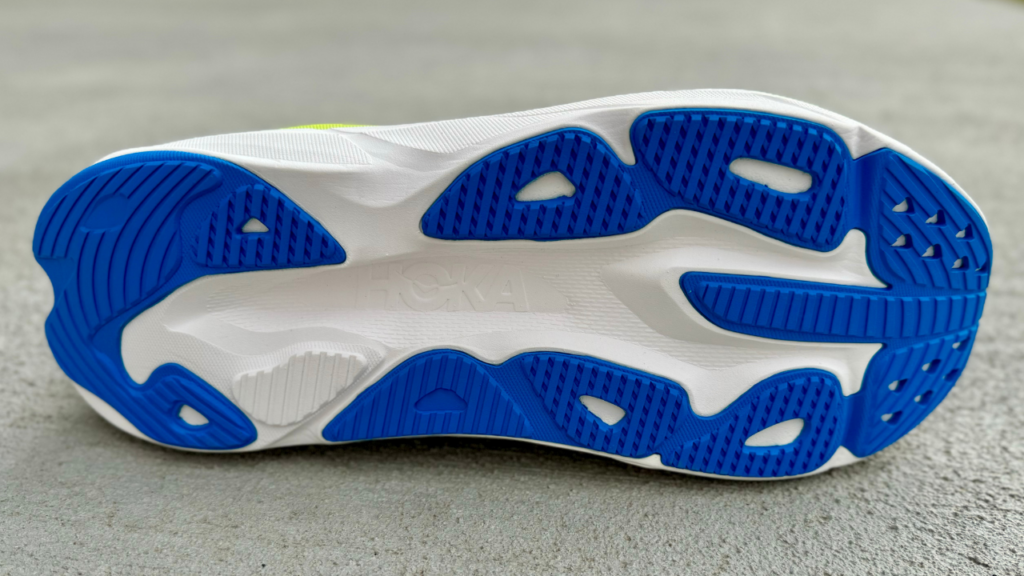
Pros
- Durable outsole
- Comfortable supercritical EVA midsole
- Rocker that makes tired running feel easier (for Drew)
- Active Foot Frame creates a highly stable platform
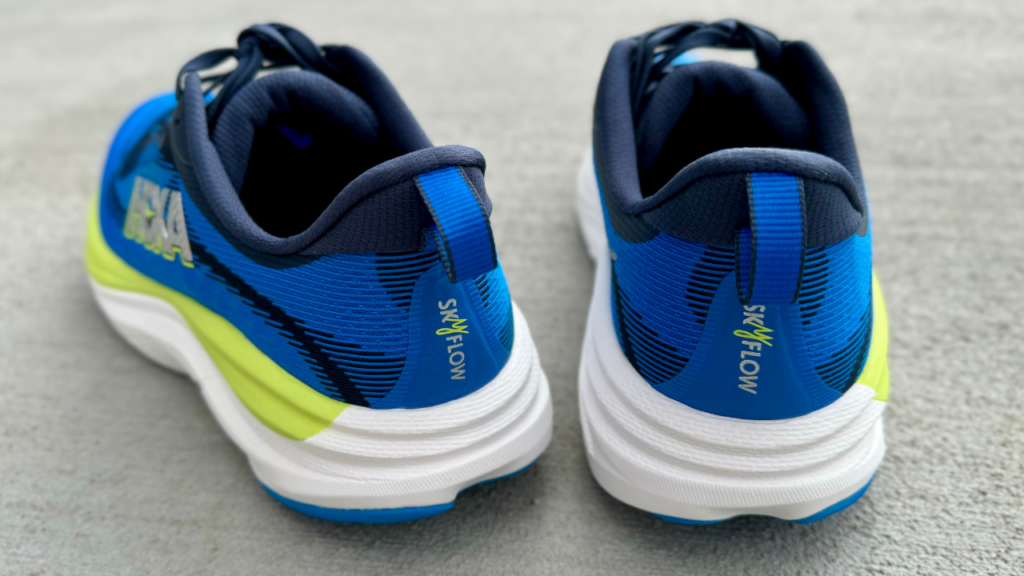
Cons
- Warm-ish on foot
- Boring, yet comfortable upper
- Not versatile enough to use on speed days
- Potentially too stiff for those who need a less structured ride (Annie)
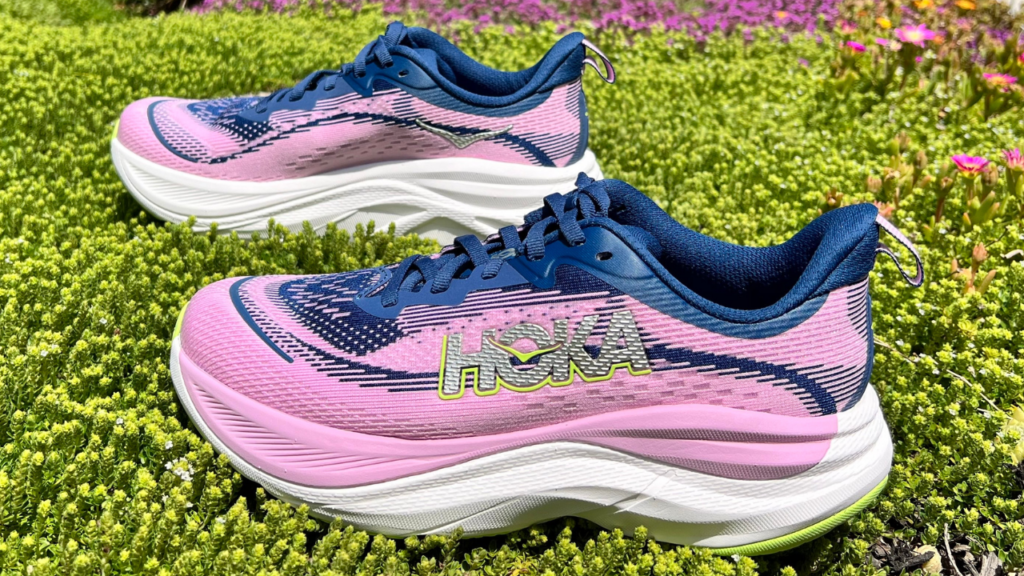
Is the Hoka Skyflow wide foot friendly?
Drew: I wouldn’t recommend the regular version of the Hoka Skyflow to my wide-footed friends. It feels a bit too narrow in the midfoot and forefoot and won’t accommodate too much extra width. The good news is that Hoka offers a wide version which should allow all but the widest of feet to give the Skyflow a try.
Annie: So, yeah, as Drew said above, those with wide feet will want to start with the wide sizing and see how that works for them. I started in a women’s standard width 6.5B which was more than a little too long and also too snug through the ball of the foot. I ended up feeling better in a women’s 6D (shoutout to Athletic Annex for providing the wide version during testing so I could give the Skyflow a fair shake in a more appropriate size).
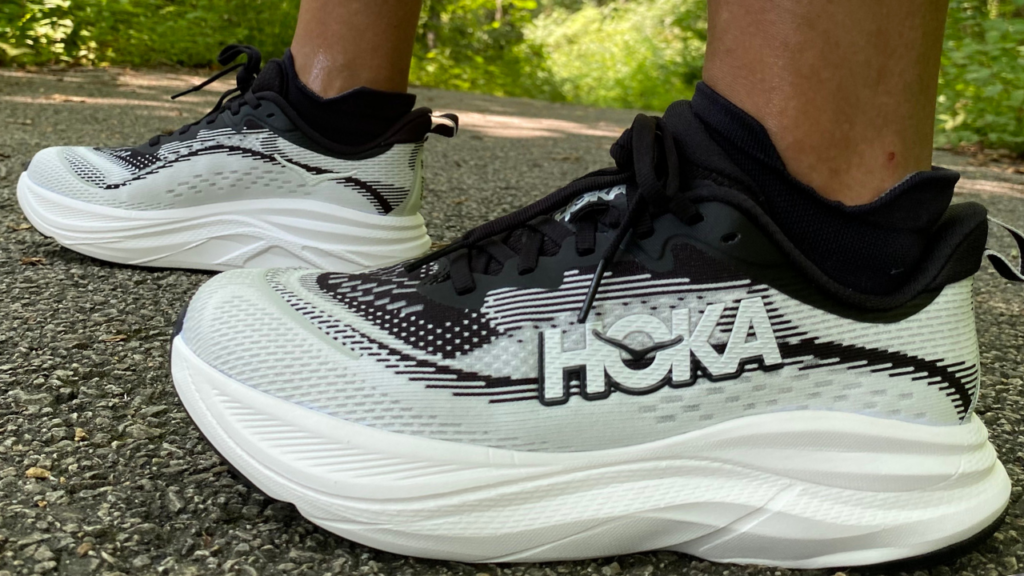
There was actually still a bit of extra length even in the 6D, and I think my sizing issues only contributed to the feeling of being out of sync with the shoe’s setup. Ultimately, if you had a Clifton 9 size that worked well for you, go with that same size here. But you may otherwise need to do a bit of experimenting to find the right fit in the Skyflow.
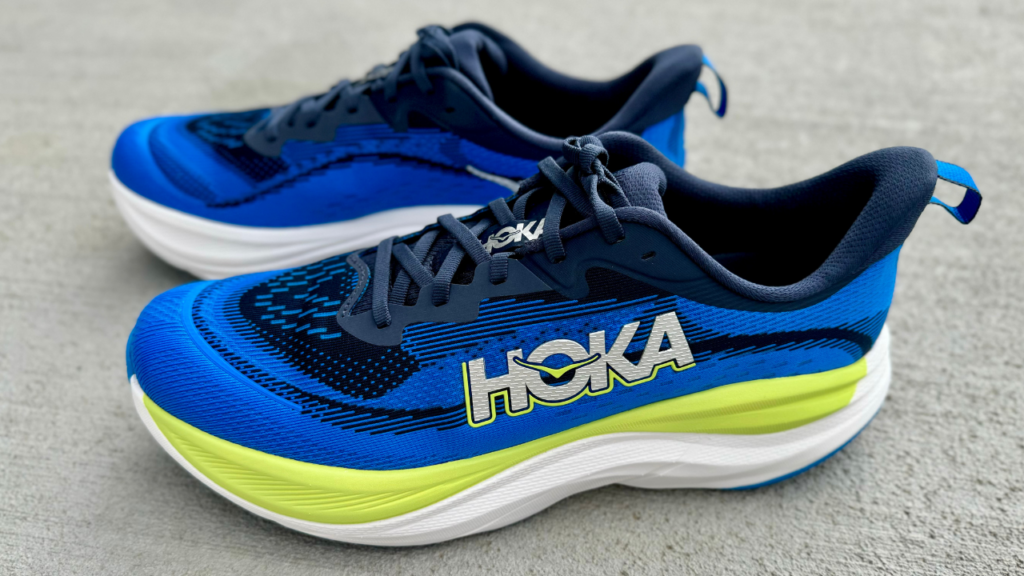
Is the Hoka Skyflow worth $160?
Drew: $160 is the going rate for a daily trainer with 40mm of foam in the heel. The problem with that whole price band, not just the Hoka Skyflow, is that it’s tough to justify $160 for a shoe that’s only usable on easier days. Jumping up to $180 offers a lot more versatility and bounce; while going down to $140 gives you less foam but some shoes that can pick up the pace when needed.
Annie: Drew nailed it here. The category the Hoka Skyflow sits in is simply a tricky one. You’re really paying for the extra cushion, not necessarily versatile performance. As a smaller runner, I don’t tend to gravitate toward shoes that fall into this price band. The trade-off just sometimes isn’t worth it for me personally.
Shoes in the $140 range often sufficiently cover my daily needs with plenty of comfort, more pep, and less weight. The New Balance FuelCell Rebel v4, Topo Magnifly 5, Topo Ultrafly 5, and the Asics Noosa Tri 16 ($135) or Asics Novablast 4 all come to mind. Spending less there then also allows me to enjoy shoes in the $180+ range when I want a lot more long-distance capability or high-performing specialization.
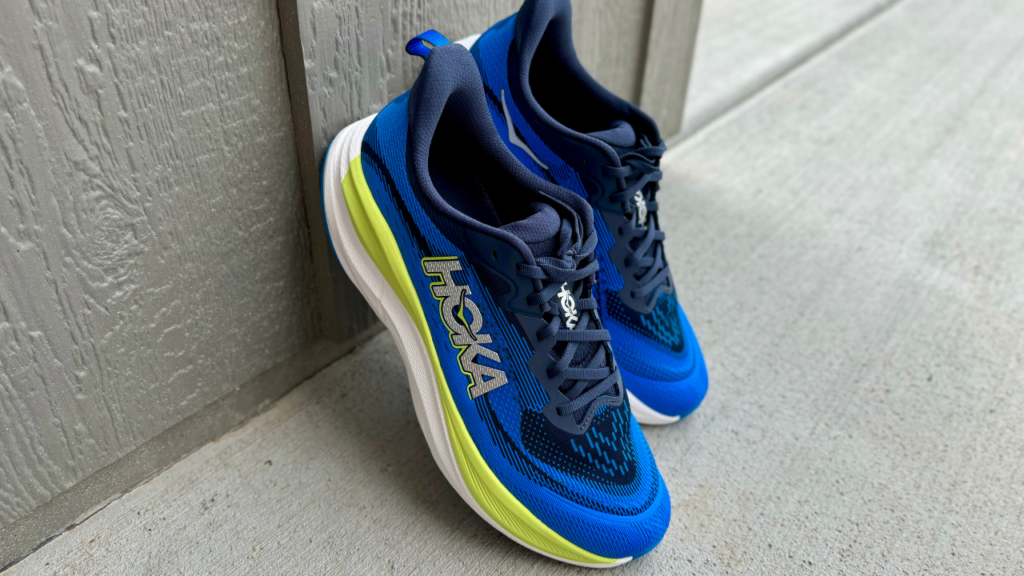
Hoka Skyflow Summary
Drew: The Hoka Skyflow is a solid shoe that is a much better fit for more active runners than the Hoka Bondi. It gives Hoka a better, more worthy competitor to the group of high-stack daily running shoes you’ll find on the wall at your local running store. It won’t be versatile enough for everyone, but it’s durable and a solid performer.
Annie: The Hoka Skyflow is a durable cruiser that speaks best to those who prefer a stiffer platform beneath a tall stack of soft-ish foam. I don’t know if it’s a shoe that will win new Hoka fans (if you haven’t gotten along with Hoka’s fit or geometry in the past, you aren’t super likely to start now). But the brand’s already established audience will likely see in the Skyflow a new, long-lasting option for comfortable, easy miles out on the roads.
How does the Author Run?
Drew Whitcomb (age 42, 6’6″ 195lbs): Runs daily with a once a week rest day. Runs a lot of miles due to testing needs and a growing affinity for long-distance races. Regularly competes in marathons, half-marathons, 10k, and 5k races.
Annie Keris (age 39, 5’0” 117lbs): Typically follows a “two days on, one day off” running routine. “On” days include daily miles, speed work, and long runs. An “off” day usually involves yoga and mobility/recovery work. Enjoys occasional racing but perhaps enjoys the training process even more. Gravitates most toward the half marathon distance, but ventures into the 10k and 5k as well. The marathon is thus far uncharted territory…
Disclosure
While Hoka did send pairs of the Hoka Skyflow to facilitate this review, the company had no involvement in this review, didn’t receive an advance look at it, and has not attempted to influence it.

